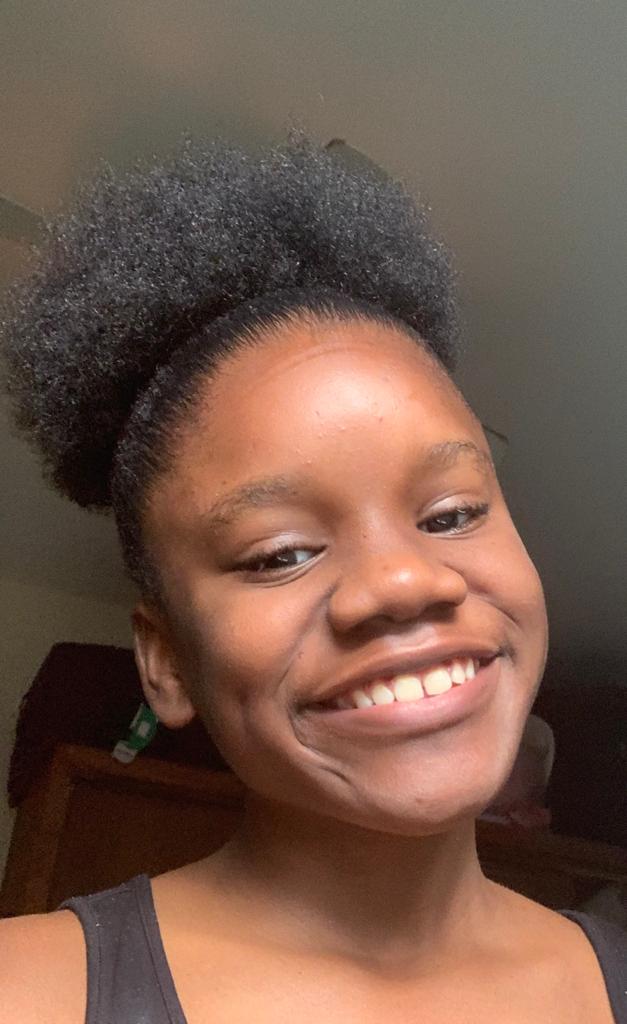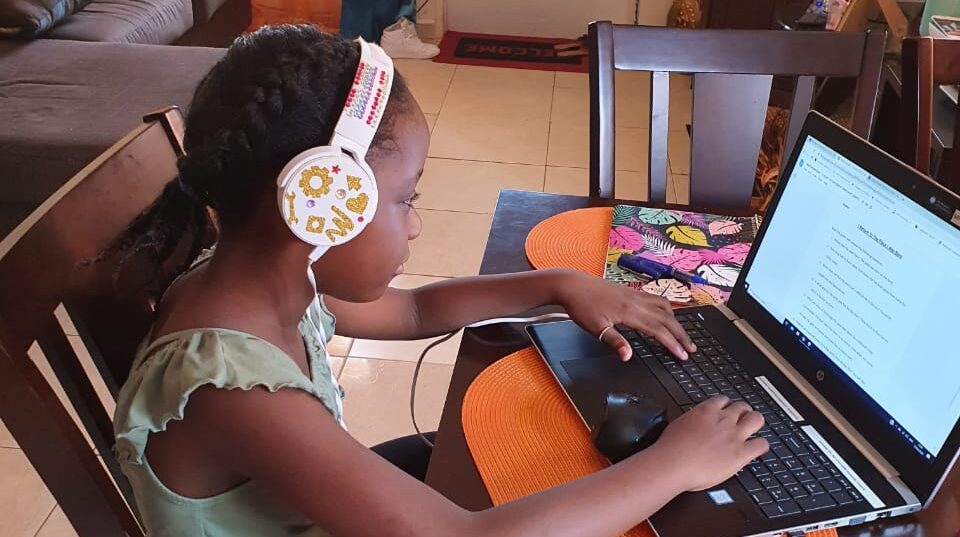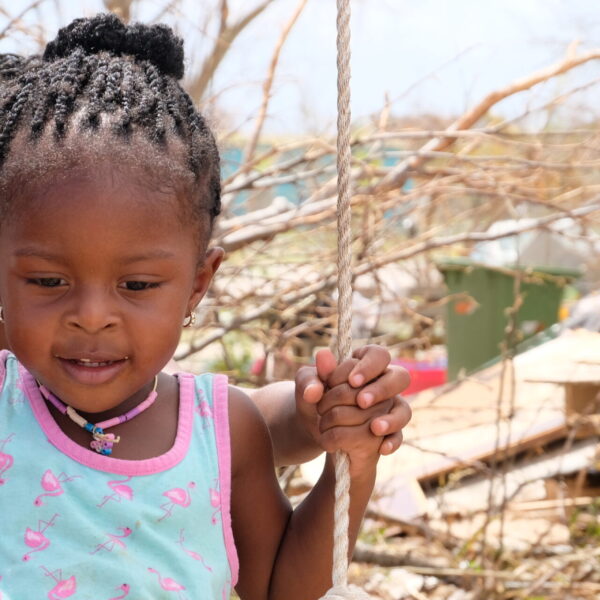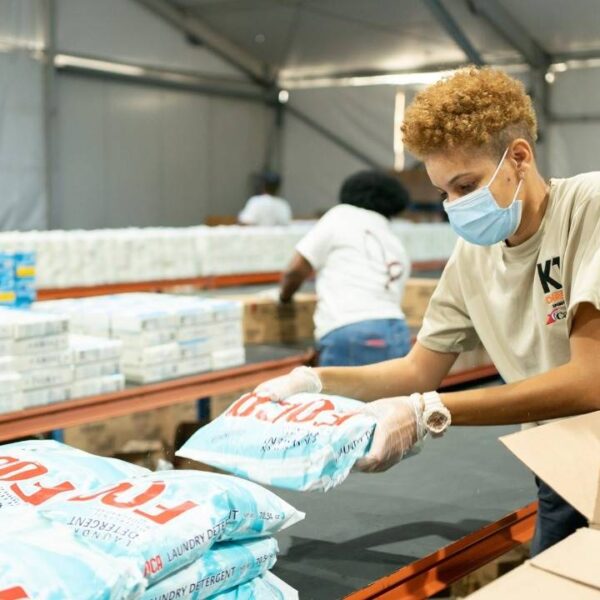Schools usually provide kids with daily structure, a safe environment and opportunities to socialize with their peers. For some it goes a step further, and school is the place where a meal is guaranteed, or serves an escape from a difficult home situation.
“It’s important to first know if your students are safe and provided for, and after that comes the teaching,” says Latisha Brown, teacher at a high school on Sint Maarten. Teachers are on ‘the frontlines’, next to parents, in securing the wellbeing of children daily. On March 18, all schools on Sint Maarten were officially asked to (physically) close their doors as a safety response to the coronavirus (COVID 19) epidemic. This meant big changes for all students, teachers and parents on the island. How are they handling the new dynamics of being at home all day and having to provide or attend online education? Impressions by students, teachers, and parents:

Yara Delice (4), student at Green Learning Academy (GLA) and her mother Domino:
“I wish God would make everyone better, so I can see my friends”
Yara is four years old and loves to color. Yoga, math and Dutch are her favorite classes. Shen was also very excited about a new playhouse that was built just a week before the school closed due to the corona epidemic.
Yara: “The playhouse had a tunnel, slides and more. But now I cannot go to school anymore because I can get sick. I miss my teacher and my friends, but I have school now on the computer.”
Domino: “Yara now has a virtual class every weekday for about two hours, which I do together with her. I really enjoy having the time to do the classes together and be more involved in her education. However, I can imagine how difficult this situation might be for parents who are still working as well. We are all affected by the uncertainty of this epidemic. Although Yara is young, she does pick up the, often negative, messages surrounding the crisis. She said the other day: ‘I wish God would make everyone better so I can see my friends.’ It is important to talk to your kids about their feelings, so that you can comfort them.”

Kiran Manglani, teacher at Green Learning Academy (GLA):
“Visual aids such as photos, videos, and games are very important”
Typically, Kirans’ kindergarten classes (3-5 years) would include languages, math, social studies and science. She also incorporates lots of activities in her teaching methods such as yoga, zumba, singing, interactive sharing, science experiments, outside play, art projects and excursions.
“I think the most challenging part about teaching online is keeping my students focused. Within the age group that I teach the attention span of students is quite short. I need to use a lot of visual aids such as photos, videos and games to keep their interest. My teaching-hours might be shorter, but the preparation and execution of these classes is a lot more intensive. Some of my favourite online teaching apps or tools are: Zoom, Splashmath and Youtube – I especially like videos by Jack Hartman. Extra patience and getting creative with your classes is a must when teaching online.”

April Titre (9), student at Asha Stevens Hillside Christian School (ASHCS), and her mother Abenie Semple: “Ask your kids to help you navigate new technology, they are very savvy!”
Kahoot, Studyladder and Turtle Diary are just some of the online learning platforms April already used to work with while attending ASHCS.
April: “Now we are using Google classrooms. My teachers post work online, and I have to type the answers and send it to them. My music teacher asked us to sing a song, record and send it. I also really like our class-discussions with teacher Leandra. I miss my friends the most, I like to play and talk with them. It is not the same talking to them online.”
Abenie: “The most challenging for April is that there is a lot less movement happening during her day, which can make her weary. When this happens, we just take a break from her online classes and do something else for a bit. More than ever it is important for parents and teachers to work together. I’d tell parents or teachers who are fearful to explore new technology: just do it! Most are easy to learn and if you don’t understand something, you can likely ask your kids, because they are very technology savvy.”

Leandra Honore, teacher at Asha Stevens Hillside Christian School (ASHCS):
“Creating a safe space for kids to express their feelings is very important, even more so during a crisis”
As a mother of two and a teacher for 10 years, Leandra has always enjoyed connecting with children. She believes in incorporating lots of encouragement and opportunities for healthy discussions during her lessons for her 9 – 11 years old students.
“I have noticed some parents are worried their kids will be ‘left behind’. This isn’t true, as the entire world is experiencing this. Although life as we know it may never be the same again. We can rest assured that our children will adjust and adapt and thrive in this new normal. To provide effective online learning, I believe that keeping classes simple and fun is key. Students aren’t used to sitting down all day, so I try and incorporate some movement into my teaching. Also, outside of school it is the perfect time to teach your kids life-skills that are just as important, such as cooking a meal, washing the dishes, sewing on a button etc. This health pandemic is affecting my students, whether they have a parent working on the ‘frontlines’, or a family member abroad that is sick, etc. Kids, especially younger ones, might not always be good at verbalizing their feelings. Therefore it is very important to create moments, even if it is online, so they can express them.”

Kyrah Lacroes (15), student at Milton Peters College (MPC): “Upside to online learning: it allows us to go at our own pace”
“I usually look forward to going to school, because it gets me out of the house and I get to talk to my friends. School always brings something new to my day, which isn’t really the case when you are learning online. I’ve never done online classes before, but it was easy to figure out. I think most teenagers are pretty good at using technology. One aspect of online teaching that I do really miss compared to my usual classes is that I can’t just walk over to the teachers’ desk. I need to wait until the teacher answers my questions online over a message. Some teachers are better at this than others. When we are back at school, the only thing I think I’ll miss is that you can do assignments now at your own pace. I prefer this to either waiting on – or rushing to keep up with my classmates, depending on the subject. It would be cool if they can somehow keep this going when we go back to regular classes.”

Latisha Brown, teacher at Milton Peters College (MPC): “During this time, you need to remember not to be too hard on others, or yourself. Try your best – that is enough”
A few years ago the school started to provide technology classes for teachers. This was a blessing, thinks Latisha, because the transition to online learning seemed to go pretty smoothly for most of her students, who are 12 -16 years old.
“We follow a schedule from 7:30 a.m. to around 12:30 a.m. daily. This structure helps us keep on track and incorporates a bit of normalcy into our day. After a few weeks, we did notice it was becoming harder to keep our students motivated online, compared to being in the classroom, where you can give them a ‘nudge’ in person. It comes down to trying to vary your teaching methods to keep your students engaged. One of the programs I often use is ‘Vocabtest’ with which you can personalize language tests into fun games. Youtube is another favorite of mine.
Although keeping a certain structure within your day is important, I have also figured out that you need to be flexible. At times the Internet does not work, and at times you are having a bad day – the same goes for your students. We had quite a few students that made use of our breakfast program for example before lockdown. As always, it is important to first know if your students are safe and provided for. After that comes the teaching.”



